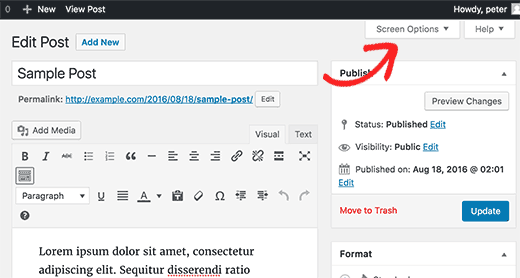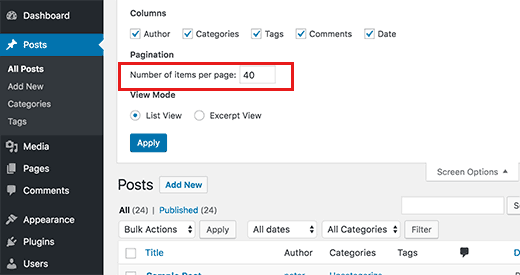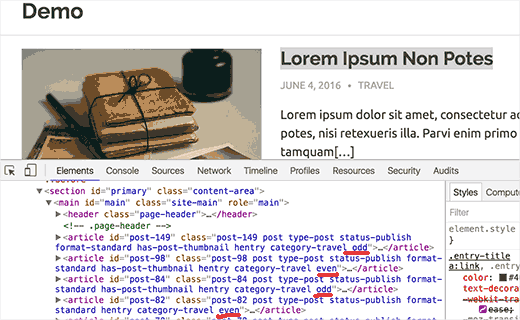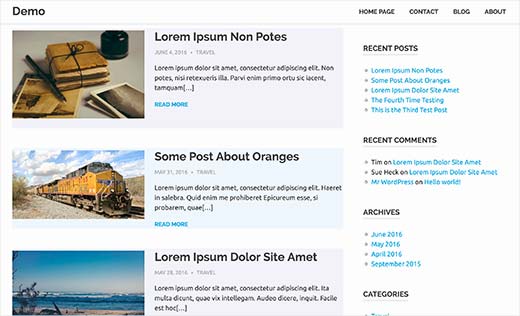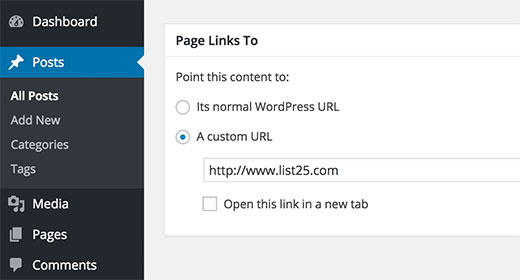alt="One Year Later: Post Penguin and Google Analysis" src="http://whsr.webrevenueinc1.netdna-cdn.com/wp-content/uploads/2013/04/0416-9-500x500_c.jpg" />
Update: A new round of Penguin filter is rolled out on May 22, read my title="Penguin 2.0 Update" href="http://www.webrevenue.co/search-engine-optimization/penguin-2-0-roundups-studies-and-losers-analysis/">Penguin 2.0 roundups, studies, and losers analysis for more details.
When Google first rolled out Penguin, this was published on title="Google announcement on Penguin Updates" href="http://insidesearch.blogspot.com/2012/04/another-step-to-reward-high-quality.html" target="_blank">the company’s official blog:
In the next few days, we’re launching an important algorithm change targeted at webspam. The change will decrease rankings for sites that we believe are violating Google’s existing quality guidelines. We’ve always targeted webspam in our rankings, and this algorithm represents another improvement in our efforts to reduce webspam and promote high quality content.
And that was almost one year ago.
How has Google changed since then? What does the search result look like today? Did Google walk the talk and kill off webspams? How do SEOs adapt and play along with Google’s new pet?
The idea of comparing Google’s before-and-after SERP popped up while I was doing my own SEO test recently. By looking into websites that got filtered and comparing them with those that remain in the top SERP, perhaps we can pick up a trend and come with a better SEO plan in 2013.
And So I Begin…
Designing My Case Study
Using title="Google Adwords Tool" href="https://adwords.google.com/o/Targeting/Explorer?__c=1000000000&__u=1000000000&ideaRequestType=KEYWORD_IDEAS" target="_blank">Google Adwords Tool, I picked up roughly 500 popular search terms that were rated as high competition by Google in various industries. Then I tried to sort things out a little and selected 300 search terms with at least 10,000 global searches.
To give you a brief idea, here are 10 samples of the search terms I looked at.
width="602" border="0" cellspacing="0" cellpadding="0">
nowrap="nowrap" width="271">KWnowrap="nowrap" width="131">align="center">Competitionnowrap="nowrap" width="107">align="center">Global nowrap="nowrap" width="93">align="center">Local
valign="bottom" nowrap="nowrap" width="271">hosting reviewsnowrap="nowrap" width="131">align="center">Highvalign="bottom" nowrap="nowrap" width="107">align="right">90,500valign="bottom" nowrap="nowrap" width="93">align="right">49,500
valign="bottom" nowrap="nowrap" width="271">canon digital camerasnowrap="nowrap" width="131">align="center">Highvalign="bottom" nowrap="nowrap" width="107">align="right">201,000valign="bottom" nowrap="nowrap" width="93">align="right">49,500
valign="bottom" nowrap="nowrap" width="271">underwater camerasnowrap="nowrap" width="131">align="center">Highvalign="bottom" nowrap="nowrap" width="107">align="right">165,000valign="bottom" nowrap="nowrap" width="93">align="right">74,000
valign="bottom" nowrap="nowrap" width="271">backup softwarenowrap="nowrap" width="131">align="center">Highvalign="bottom" nowrap="nowrap" width="107">align="right">450,000valign="bottom" nowrap="nowrap" width="93">align="right">165,000
valign="bottom" nowrap="nowrap" width="271">cocktail dressesnowrap="nowrap" width="131">align="center">Highvalign="bottom" nowrap="nowrap" width="107">align="right">673,000valign="bottom" nowrap="nowrap" width="93">align="right">368,000
valign="bottom" nowrap="nowrap" width="271">fax through internetnowrap="nowrap" width="131">align="center">Highvalign="bottom" nowrap="nowrap" width="107">align="right">27,100valign="bottom" nowrap="nowrap" width="93">align="right">12,100
valign="bottom" nowrap="nowrap" width="271">lace dressesnowrap="nowrap" width="131">align="center">Highvalign="bottom" nowrap="nowrap" width="107">align="right">673,000valign="bottom" nowrap="nowrap" width="93">align="right">368,000
valign="bottom" nowrap="nowrap" width="271">cheap flights to zurichnowrap="nowrap" width="131">align="center">Highvalign="bottom" nowrap="nowrap" width="107">align="right">14,800valign="bottom" nowrap="nowrap" width="93">align="right">1,000
valign="bottom" nowrap="nowrap" width="271">weight loss tipsnowrap="nowrap" width="131">align="center">Highvalign="bottom" nowrap="nowrap" width="107">align="right">165,000valign="bottom" nowrap="nowrap" width="93">align="right">60,500
valign="bottom" nowrap="nowrap" width="271">stockmarket tipsnowrap="nowrap" width="131">align="center">Highvalign="bottom" nowrap="nowrap" width="107">align="right">12,100valign="bottom" nowrap="nowrap" width="93">align="right">1,000
I am aware that Google had released X number of Penguin Updates, Y number of Panda Updates, DMCA penalty, EMD updates, ad nauseum updates during the period. Websites that got penalized or kicked out from the top 10 may or may not be caused by Penguin. However, the main idea of this article is to see what works with Google today and what kind of websites that ranked well one year ago were dropped today.
Obtaining the Before and After SERPs
Then, I fired up SpyFu and check the top 10 results for each search term in March 2013 and April 2012, which are the search results before and one-year-after Penguin.
Just in case you were on SpyFu and have no idea how this is done – there’s a small icon in the Classic Search section named ‘Cached SERP Page’, clicking on it will lead you to the search results cached monthly by the system. By looking backward and rewinding back to April 2012, we get to see the difference between SERP today and SERP one year ago.
Analyzing the Results
After I got my before and after results, I analyze the websites using SEO Moz tool and Majestic SEO. The observations (details like link metrics, Moz’s Domain Authority and Page Authority measurements, number of websites dropped in each set of search results, domain age, link profiles, anchor text distribution, backlink citation flows, etc.) and personal comments were then recorded in a messy Excel file.
It was a lot easier to say than to get this done. It took me more than a week of hard work to look at more than 280 search result pages and 1,500 websites. I was forced to skip some of the sites in order to complete the job before Penguin’s 1st year anniversary, which is April 24th.
How the Landscape at Google Has Changed
Without revealing too many sensitive details, here are my key observations.
Observation 1: Minimum 30% Changes
At least 30% of the old top 10 websites were replaced in today’s result. In many cases, four to six websites that weren’t in the top 10 one year ago now rank in the top on Google.
Observation 2: Google A Better Place Today Compared To One Year Ago
Google updates – be it Penguin, Panda, Bourbon, or Florida – were meant to deliver a better search results to the users.
We want people doing white hat search engine optimization (or even no search engine optimization at all) to be free to focus on creating amazing, compelling web sites. As always, we’ll keep our ears open for feedback on ways to iterate and improve our ranking algorithms toward that goal.
Is Google providing a better result for the searchers – in terms of usefulness, relevance, and spam control?
Looking at the 280+ samples, I would say the current SERP is, surprisingly, much better than one year ago. Okay, my view does not represent billions of other searchers, but trust me, the differences between SERP now and SERP one year ago are very obvious.
For example, on a search term related to Internet faxing service (76.5+ million results), three affiliate sites filled with some mediocre articles were removed from the top 10. On a search term related to a very popular underwater gadget (11+ million results), two extremely famous but useless content farms were replaced by informative websites owned by the gadget manufacturers.
style="text-align: center;">
class="aligncenter wp-image-836" alt="Comparing Google SERP before-and-after Penguin" src="http://whsr.webrevenueinc1.netdna-cdn.com/wp-content/uploads/2013/04/0416-1.jpg" srcset="http://whsr.webrevenueinc1.netdna-cdn.com/wp-content/uploads/2013/04/0416-1.jpg 800w, http://whsr.webrevenueinc1.netdna-cdn.com/wp-content/uploads/2013/04/0416-1-300x201.jpg 300w, http://whsr.webrevenueinc1.netdna-cdn.com/wp-content/uploads/2013/04/0416-1-750x503.jpg 750w" sizes="(max-width: 800px) 100vw, 800px" />
style="text-align: center;">
class="aligncenter wp-image-832" alt="Comparing Google SERP before-and-after Penguin" src="http://whsr.webrevenueinc1.netdna-cdn.com/wp-content/uploads/2013/04/0416-5.jpg" width="750" srcset="http://whsr.webrevenueinc1.netdna-cdn.com/wp-content/uploads/2013/04/0416-5.jpg 800w, http://whsr.webrevenueinc1.netdna-cdn.com/wp-content/uploads/2013/04/0416-5-300x244.jpg 300w, http://whsr.webrevenueinc1.netdna-cdn.com/wp-content/uploads/2013/04/0416-5-750x612.jpg 750w" sizes="(max-width: 800px) 100vw, 800px" />
On another search for cheap flights to one of the popular European destinations, the old result page was dominated by five domains whereas the new result page now displays results from 10 different domains – giving the searchers more varieties and comparison choices. The same goes for a popular fashion search, there are nine, instead of six, different domains on the top 10 results.
style="text-align: center;">
class="aligncenter wp-image-833" alt="Comparing Google SERP before-and-after Penguin" src="http://whsr.webrevenueinc1.netdna-cdn.com/wp-content/uploads/2013/04/0416-4.jpg" width="750" srcset="http://whsr.webrevenueinc1.netdna-cdn.com/wp-content/uploads/2013/04/0416-4.jpg 800w, http://whsr.webrevenueinc1.netdna-cdn.com/wp-content/uploads/2013/04/0416-4-300x201.jpg 300w, http://whsr.webrevenueinc1.netdna-cdn.com/wp-content/uploads/2013/04/0416-4-750x503.jpg 750w" sizes="(max-width: 800px) 100vw, 800px" />
style="text-align: center;">
class="aligncenter wp-image-834" alt="Comparing Google SERP before-and-after Penguin" src="http://whsr.webrevenueinc1.netdna-cdn.com/wp-content/uploads/2013/04/0416-3.jpg" width="750" srcset="http://whsr.webrevenueinc1.netdna-cdn.com/wp-content/uploads/2013/04/0416-3.jpg 800w, http://whsr.webrevenueinc1.netdna-cdn.com/wp-content/uploads/2013/04/0416-3-300x201.jpg 300w, http://whsr.webrevenueinc1.netdna-cdn.com/wp-content/uploads/2013/04/0416-3-750x503.jpg 750w" sizes="(max-width: 800px) 100vw, 800px" />
In brief, Google’s search results today have fewer junk sites (those sites with very little meaningful content) and consist of more varieties of sites (hence, benefiting the searchers) – thanks to Google’s Panda Update.
Observation 3: Link Manipulations
Next, I took a closer look on some of the high ranking sites. Apparently, many high ranking sites are still using questionable (by Google’s guidelines) link building practices.
Has Google killed off link manipulations? The quick answer is no. But somehow, the search giant manages to sweep out many thin content sites from its search results.
Observation 4: Diverse Anchor Text
Sites that rank well are normally very diverse in terms of back link anchor texts. Below are some samples of sites that occupy the top spots in competitive markets – note that these high ranking sites are having at least 75% diversify anchor text.
style="text-align: center;">
class="aligncenter wp-image-838" style="border: 0px;" alt="Link Profile Of High Ranking Sites" src="http://whsr.webrevenueinc1.netdna-cdn.com/wp-content/uploads/2013/04/0416-6.jpg" width="750" srcset="http://whsr.webrevenueinc1.netdna-cdn.com/wp-content/uploads/2013/04/0416-6.jpg 615w, http://whsr.webrevenueinc1.netdna-cdn.com/wp-content/uploads/2013/04/0416-6-157x300.jpg 157w" sizes="(max-width: 615px) 100vw, 615px" />
Observation 5: Domain Authority
Google loves internal pages from a strong domain – I guess that is the ‘Brand Factor’ in play. I use SEO Moz’s Domain Authority (it’s not the best metric but that’s the best we have) to measure a domain strength and, in most cases, internal pages that rank top five in a competitive market are coming from websites with at least DA score 65.
Here’s five random samples I picked up from my messy Excel file.
style="text-align: center;">
class="aligncenter wp-image-839" alt="Domain Authority vs Google Rank" src="http://whsr.webrevenueinc1.netdna-cdn.com/wp-content/uploads/2013/04/0416-7.jpg" width="750" />
Here’s data driven from a larger samples.
style="text-align: center;">
class="aligncenter wp-image-840" alt="DA Score vs Google Ranks" src="http://whsr.webrevenueinc1.netdna-cdn.com/wp-content/uploads/2013/04/0416-8.jpg" width="750" srcset="http://whsr.webrevenueinc1.netdna-cdn.com/wp-content/uploads/2013/04/0416-8.jpg 615w, http://whsr.webrevenueinc1.netdna-cdn.com/wp-content/uploads/2013/04/0416-8-300x164.jpg 300w" sizes="(max-width: 615px) 100vw, 615px" />
How To Adapt To Post-Penguin Google
Here are a few tips on how to adapt to the new Google one year after Penguin Updates.
Please bear in mind that these tips were drawn from my personal research and studies – which are limited to the data I can access and dependent on several uncontrolled variables such as the accuracy of the tools I am using (SpyFu, Majestic, etc.). I highly recommend you do your own research before making any important decision and strongly encourage you to post your comment here if you disagree with my findings.
Have Backup Plans For Your Life
At least 30% of Google’s top 10 positions changed hands in the past 12 months. SEO is a volatile game, you’ll need a plan B, plan C, and maybe a plan D. Having some savings and business running on the side is a must for the long run – just in case things don’t work out the way you wish, there’s still something to support you and your family.
Test And Diversify
Scale up; test and diversify everything you can. Study different ways to do web marketing, build different traffic sources to your sites, learn and use different SEO methods on multiple sites – should one or several of your sites under-perform or get penalized, you’ll still have others that should perform well enough.
Be ROI Focused
Try your best to balance your books. Your investments – be it a new link building method or social media marketing campaign – should be measured closely and fine-tuned from time to time.
Create Good Content
Google Panda is very good in catching websites with poor content. Furthermore, title="SEO Theory's link's lifespan" href="http://www.seo-theory.com/2012/02/14/the-average-lifespan-of-a-link-is-six-months/" target="_blank">most links don’t last as long as content, why spend so much effort building links to your mediocre content? Build better content for long-term success.
Build A Domain That Google Trusts
Remember Eric Schmidt said “Brands are how you sort out the cesspool.” Unfortunately, in order to succeed in Google’s universe, we have to play by Google’s rules. It’s no coincidence that Google is favoring websites with higher DA scores in its ranking system. If you want to rank well across multiple competitive search result pages, you need to have a strong domain.
Be Really, Really Good In Playing Catch Up Game With Google
Google’s ranking factors today have changed drastically compared to one year ago. And it’s clear that title="Google Penguin Updates " href="http://www.seroundtable.com/google-penguin-four-16486.html" target="_blank">even bigger changes are coming in the near future.
Can the system still be gamed? Yes, I believe it can be done.
In fact, many skilled SEOs are still able to beat Google algorithm with their secret recipe. But the window is closing fast and there’s a high risk of getting nothing back in return for your effort. To me, it seems almost pointless to game the system today as it is easier (and more rewarding in long term) to build valuable content and focus on the fundamentals (i.e. thorough keyword research, target on 1,000 long tail keywords instead of 10 short tail, basic on-page SEO, proper site navigation designs, etc.).
Starting Over Is One Of The Options
One last piece of advice, if all things failed, I want you to know that it is okay to start over. I have seen companies pour millions of dollars into trying to revive from a Google slap and get nothing in return. At the same time, I noticed that some new sites, with the right recipe, get to higher rankings easily. If you’re not too concerned with branding, making a new site and starting over again might be the better option.
Page 21 – Web Hosting Secret Revealed









